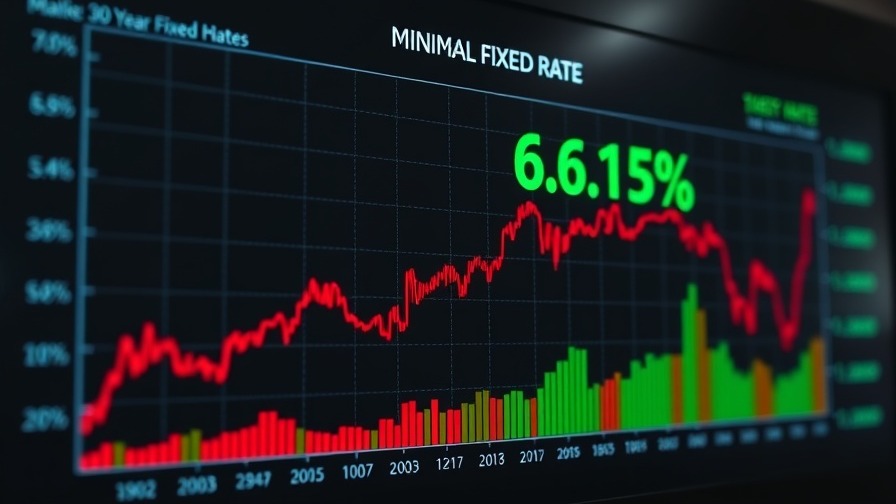
Mortgage Rates Rising: What That Means for Borrowers
The recent uptick in mortgage rates signifies shifts within the financial landscape that borrowers can't afford to overlook. As of August 21, 2025, the average rate for a 30-year fixed mortgage has settled at 6.62%—a small increase from previous weeks but still marking the highest levels we've seen in nearly three weeks. This development is particularly poignant given the backdrop of inconsistent economic indicators that have ultimately influenced this trend.
The Bond Market’s Reaction to Economic News
This week's bond market movements can be traced primarily to inflation concerns stemming from two key reports: the Philly Fed Index and S&P PMIs. These reports hinted at elevated inflation levels, prompting reactions in the bond market, which directly impacts mortgage rates. One distilled takeaway is the Fed's position: according to Beth Hammack, a Fed spokesperson, current data does not warrant a rate cut anticipated in the upcoming September meeting. Stability in the bond market is crucial, and while the increase in rates appears minimal—0.09% over the recent lows—borrowers must stay informed about potential shifts.
Current Environment: Emergency Protocols in Economic Policies
The Federal Reserve's decision-making process is pivotal in this climate of economic uncertainty, and their comments indicate they are likely to prioritize stability over drastic changes in fiscal policy. Hence, even with today's minimal climbs in mortgage rates, it’s vital for potential homeowners to reassess their financial strategies and engage in comprehensive planning. The Fed is not expected to pivot drastically in the near future, maintaining a cautious stance, which influences borrower expectations.
What Should Homebuyers Do Now?
For potential homebuyers, understanding this economic landscape is essential. The correlation between mortgage rates and borrowing behavior remains strong; as rates rise, the purchasing power of potential buyers diminishes. It's crucial to consult with financial advisors and explore various mortgage options that can mitigate some of the impacts of these rate changes. Regularly checking rates and understanding when to lock in a rate can lead to significant savings.
Historical Context: Looking Back to Project Forward
The current rates, while soaring compared to recent lows, are still an improvement compared to July 31st figures where they hovered even lower than today’s 6.62%. This historical perspective can provide insight into future trends; as the economy stabilizes, we may witness shifts that encourage homeowners to take action sooner rather than later. Historical changes in the Fed's policies reveal patterns that often precede significant economic shifts.Monitoring these trends can foster prepared and informed decisions for prospective home buyers.
A Call to Stay Informed
As the landscape of mortgage rates continues to evolve, being proactive and informed is essential for those in the market for a home. Utilizing tools such as mortgage calculators and subscribing to financial news that focuses on market trends can equip buyers with the information they need to navigate this unpredictable terrain effectively.
Whether you're looking to buy your first home, refinance, or simply stay updated with the current rates, it is essential to consistently monitor these shifts and take actionable steps accordingly. Investors and homeowners should aim for informed perspectives that inherently allow their financial movements in mortgage decisions to become strategically sound.
 Add Row
Add Row  Add
Add 




Write A Comment